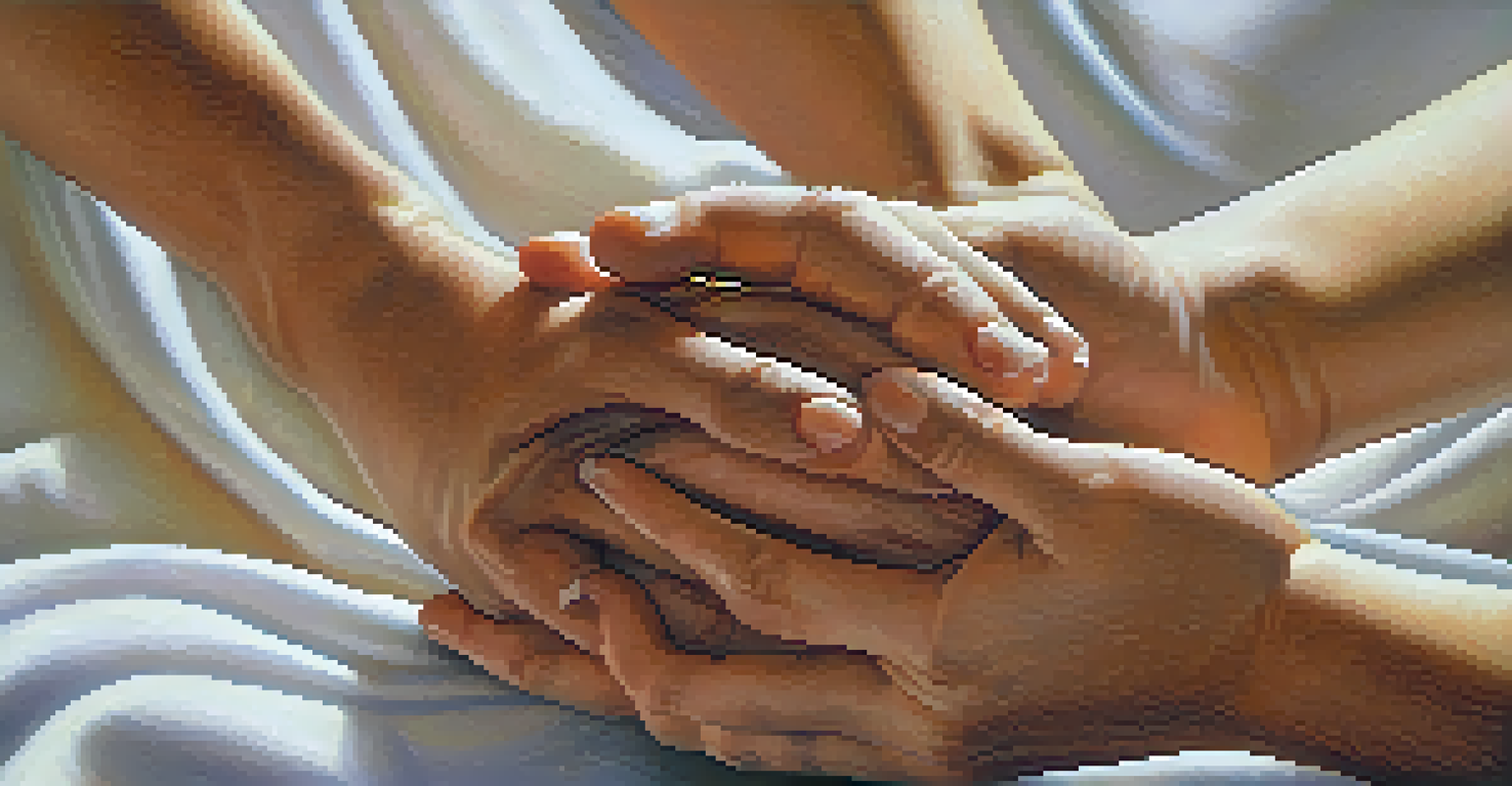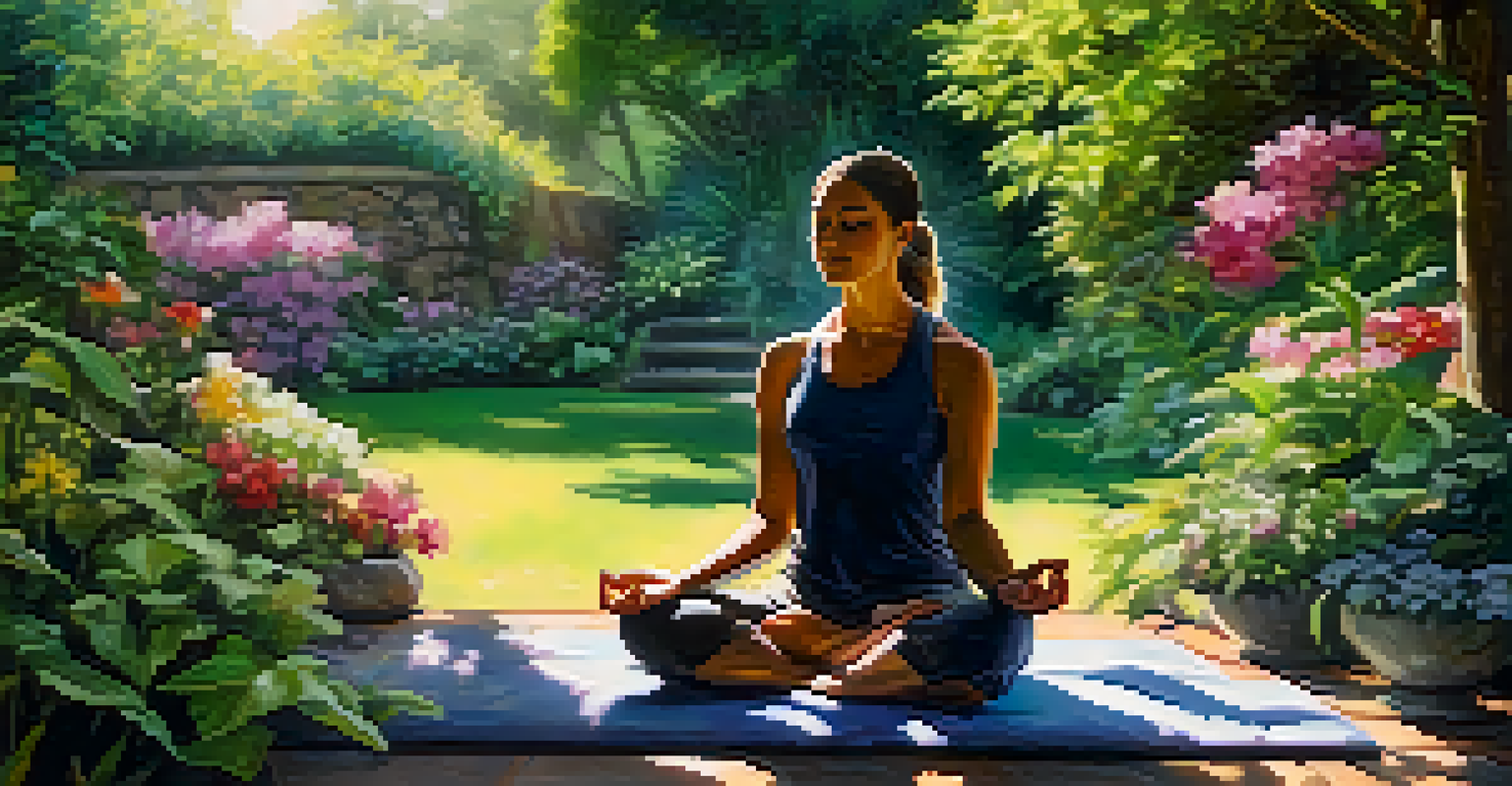Exploring Reiki: The Spiritual Side of Energy Healing

What is Reiki? A Brief Overview of Energy Healing
Reiki is a form of energy healing that originated in Japan in the early 20th century. It's based on the idea that we all have a life force energy that flows through us, influencing our physical, emotional, and spiritual well-being. Practitioners use gentle touch or hand placements to channel this energy, promoting relaxation and healing.
The body is a temple, and we must take care of it. Energy healing is one way to restore balance and harmony.
The term 'Reiki' itself is derived from two Japanese words: 'Rei,' meaning universal, and 'Ki,' meaning life force energy. This practice allows individuals to tap into their own energy and the energy around them, facilitating a deeper connection to the universe. Many people find that Reiki helps them manage stress and enhance their overall quality of life.
While Reiki is often classified as a spiritual practice, it is not tied to any particular religion. This inclusiveness makes it accessible to everyone, regardless of their beliefs. Whether you're seeking relief from physical pain or looking for spiritual growth, Reiki offers a unique path towards inner peace.
The History of Reiki: From Ancient Roots to Modern Practice
Reiki's journey began with Mikao Usui in the 1920s, who developed the system after a profound spiritual experience. Inspired by his enlightenment, Usui sought to share healing methods that focused on energy, leading to the formalization of Reiki. Today, this practice has evolved, incorporating diverse techniques and philosophies.

Throughout the years, Reiki has spread across the globe, adapting to various cultural contexts while maintaining its core principles. In the West, it gained popularity in the 1980s and has since been embraced by healthcare professionals as a complementary therapy. This merging of traditional and modern practices showcases Reiki's versatility and effectiveness.
Reiki: A Holistic Healing Approach
Reiki is an energy healing practice that promotes relaxation and emotional well-being through gentle touch and energy channeling.
Understanding Reiki's history helps us appreciate its depth and complexity. It’s not just a healing technique; it’s a philosophy that encourages self-discovery and growth. By exploring its past, we can better understand how it fits into our lives today.
How Reiki Works: The Science Behind Energy Healing
At its core, Reiki operates on the principle that everything is composed of energy, including our bodies and the environment around us. This energy can become blocked or misaligned due to stress, trauma, or illness, leading to physical and emotional discomfort. Reiki practitioners aim to restore balance and harmony within the body’s energy system.
Healing is a matter of time, but it is sometimes also a matter of opportunity.
While some may view Reiki skeptically due to its spiritual aspects, research has shown promising results. Studies indicate that Reiki may help reduce pain, anxiety, and depression, enhancing overall well-being. It’s a complementary approach, meaning it works best alongside conventional medical treatments rather than as a replacement.
Understanding how Reiki influences the body can demystify the practice for newcomers. It's less about mystical forces and more about harnessing the body's natural ability to heal itself. This empowerment aspect is key to why many people find Reiki so appealing.
The Benefits of Reiki: Healing Beyond the Physical
Reiki offers numerous benefits, extending far beyond mere physical healing. Many practitioners report feeling a profound sense of relaxation and emotional release during sessions. This calming effect can lead to improved mental clarity, reduced stress, and a greater sense of balance in one’s life.
Additionally, Reiki can support personal growth by facilitating emotional healing. As individuals connect with their energy, they may uncover and address underlying issues, leading to transformative insights. This process encourages self-awareness and helps foster a deeper connection to oneself and others.
Understanding Reiki's History
Reiki's development by Mikao Usui in the 1920s highlights its evolution from ancient roots to a modern complementary therapy embraced worldwide.
For those curious about spiritual growth, Reiki provides an avenue for exploration. Many find that regular sessions enhance their intuition and spiritual practices, allowing them to connect more deeply with their inner selves. It’s a holistic approach that nurtures the mind, body, and spirit.
Experiencing Reiki: What to Expect During a Session
If you're considering a Reiki session, knowing what to expect can ease any apprehensions. Most sessions take place in a tranquil environment where the practitioner creates a calming atmosphere, often using soft music, candles, or essential oils. You'll typically lie down fully clothed while the practitioner gently places their hands on or near your body.
During the session, many people report feeling sensations such as warmth, tingling, or deep relaxation. Each experience is unique, reflecting the individual's energy state. It's not uncommon to drift off to sleep, as the soothing energy promotes a peaceful state of mind.
After your session, it's essential to take a moment to reflect on your experience. Some individuals may feel an immediate sense of relief, while others might notice shifts over the following days. Keeping an open mind and allowing yourself to process the experience can enhance the benefits of Reiki.
Common Misconceptions About Reiki and Energy Healing
Despite its growing popularity, Reiki is often surrounded by misconceptions. One common myth is that Reiki is a religious practice. In reality, it's a spiritual healing approach that can be integrated into various belief systems without conflict. This openness makes it accessible to many seeking holistic healing.
Another misconception is that Reiki is only for those with specific health issues. In truth, anyone can benefit from Reiki, whether they are seeking relief from physical pain or simply looking to relax and recharge. The practice addresses the entire person, making it suitable for diverse needs.
Benefits Extend Beyond Physical Pain
Reiki offers various benefits, including emotional healing, personal growth, and enhanced spiritual connection, making it a holistic practice.
Finally, some people believe that Reiki is a miracle cure. While it certainly can provide relief and facilitate healing, it's important to view it as a complementary therapy. Reiki works best in conjunction with other medical treatments, empowering individuals to take charge of their health and well-being.
Getting Started with Reiki: Finding a Practitioner
If you're intrigued by the idea of Reiki and want to explore it further, the first step is finding a qualified practitioner. Look for someone who is certified and has a good reputation within the community. Personal recommendations or online reviews can be helpful in this process.
When you meet with a practitioner, don’t hesitate to ask questions about their training, experience, and approach. A good practitioner will be happy to discuss their methods and how they can customize sessions to meet your needs. Comfort and trust are crucial for a successful experience.

Once you find the right fit, be open to the journey ahead. Reiki is a personal experience, and your journey may unfold in unexpected ways. Embrace the process, and allow yourself to discover the many layers of healing that Reiki has to offer.